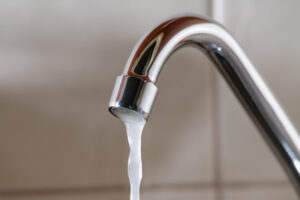
Low water pressure is an annoyance if you have ever battled to remove shampoo from your hair, washed your hands with a trickle of water, or had to wait for what seemed like an eternity for your washing machine to finish a cycle. Simple jobs can become complicated by low water pressure, but once you know what’s causing it, you can either address the plumbing issue or install a water booster pump to greatly increase your water pressure. The nine most typical reasons for low water pressure are discussed below, along with tips on how to raise the pressure in your home.
Why is water pressure so low?
Numerous problems, such as pipe corrosion, scale buildup, leaks, and even gravity, can result in low water pressure.
- pipes that have corroded
Corrosion is a normal chemical reaction between metal and oxygen in water. Rust, for instance, is a type of corrosion. Low water pressure results from clogged pipes that restrict water flow due to corrosion. Corrosion develops gradually, thus the older your pipes are, the greater the risk. Corrosion can be made worse by acidic water, albeit it occurs more frequently in older pipes.
The remedy: Regrettably, replacing your pipes is the only way to fix corroded pipes. Your water pressure should increase after the installation of new pipes.
- Scaling brought on by harsh water
If your water is hard, scale can build up in your pipes, obstruct the flow of water, and lower your water pressure. Scale is created when calcium and magnesium salts dissolve in hard water because it contains a lot of minerals, particularly calcium and magnesium.
The best option is to replace your pipes when scale accumulation is severe enough to lower water pressure and restrict water flow. Scale can be reduced by products like CLR Calcium, Lime and Rust Remover, however when the scale is removed, it could clog your pipes and cause an additional expensive plumbing issue. Not to mention that putting harsh chemicals in the pipes that carry your drinking water is never a good idea.
- The main water shutoff valve is not in the open position.
Make sure the main water shut off valve is fully open if your water pressure has unexpectedly dropped and you recently had maintenance done. The water must typically be turned off for plumbing repairs, but if the valve is not fully opened afterwards, your water pressure will be diminished.
The fix: Find your main shut off valve, which is put in place where your home’s main water line enters, and fully open it by twisting it anticlockwise.
- A municipal water supply issue
Your plumbing system may not be the cause of low water pressure. The municipal water system is susceptible to issues like leaks and corrosion that might result in low water pressure, just like your home’s water supply is.
Calling the local water provider to report low water pressure is the solution. Your feedback could help them identify the issue and guarantee that your water pressure is restored as soon as possible.
- A leak
Water pressure and flow can be affected by leaks. Turn off all of the faucets inside and exterior of your home to check for leaks. Check your water metre an hour later. You have a leak if it shows you are utilising water.
Hire a qualified plumber to find the leak and fix it as a solution. Your water pressure should return to normal once the repairs are done.
- A dysfunctional pressure regulator
As water enters your home from the main service line, a pressure regulator is a valve that lowers the incoming water pressure. A pressure regulator is placed to safeguard your home’s plumbing system since high water pressure can harm pipes and plumbing fixtures. If yours is set lower than 50 pounds per square inch (psi), your water pressure will feel low. Even though your pressure regulator is set to 50 psi, it could still be faulty or clogged the reason why your pressure feels low.
The solution: If your pressure regulator is currently set lower, raise it to 50 psi. Ask a plumber to replace your pressure regulator if it is malfunctioning.
7. Gravity
Water moves upward in opposition to the pull of gravity. The water pressure will be lower the higher the elevation from which the water must flow. Due to gravity, homes with numerous stories, apartment complexes, and skyscrapers may have low water pressure.
Installing a water booster pump is the solution. Pumps for water pressure boosters both raise low water pressure and boost water flow.
- Distance to the nearest water source
Your water pressure may be impacted by how far you are from the municipal water source. In order to reach your home from the water source, water must travel farther through the service line, which reduces water flow and lowers water pressure.
The fix: A water booster pump can raise water pressure and flow.
- Additional water purification techniques
Systems for treating water offer defence against pollutants and enhance unpleasant tastes and odours. They also aid in preventing problems that result in low water pressure, such as corrosion, scale, dirt, and debris, but if they are not sized properly, they may also be a part of the problem.
The answer: Ensure that the water treatment equipment is sized correctly to prevent a significant pressure drop or flow loss. If necessary, add a booster pump to your water treatment system to increase water pressure. Just be careful not to position the pump in a way that forces water into the filters at a greater psi as this could harm the filtration system. Instead, position the pump so that it raises water pressure inside your house.
How can you tell if your water pressure is low?
The simplest approach to determine whether you have low water pressure in your home is to test the water with a pressure gauge. Once fitted, pressure gauges are easy to use, cheap, and allow you to quickly check your water pressure.
Choose an outdoor tap close to where the main water line enters your home if the water you use comes from a municipal water source. Choose a tap that is close to the well’s pressure tank if your water comes from a well. Tighten the pressure gauge after attaching it to the tap. To get an accurate reading, make sure water isn’t being used anywhere else inside or outside the house, and then fully turn the faucet on. Now, you will be able to read the water pressure on the gauge’s dial. Typical home water pressure should be between 40 and 50 psi, so if the dial reads less than 40 psi, you have low water pressure.
How to boost the pressure in your water
Depending on what is causing your water pressure to be low in the first place, you can determine the best way to raise it. If necessary, resolve the underlying plumbing issue, such as by replacing problematic pipes, resolving a leak, or repairing a broken pressure regulator. A water booster pump is a fantastic choice if your plumbing system is in good condition but you are not happy with your water pressure.
A water booster pump is what?
A centrifugal pump called a “water booster pump” can boost low water pressure and enhance water flow. A water booster pump’s rotating impeller takes water in and then forces it out with more force, similar to how fan blades produce air gusts, so increasing water pressure. Every tap and appliance will have better water pressure thanks to the installation of a water booster pump where the main water line enters your property.
How to boost a well’s water pressure
There are three fundamental actions you can do to boost well water pressure: change the pressure switch on your tank, clean up your pipes, or construct a constant pressure system.
Adjust the pressure switch on your tank
Use a pressure gauge to check your water pressure. Adjust the pressure tank switch to increase your water pressure if the measurement is less than 40 psi. To adjust the pressure, find the pressure switch on the line that connects your well to your storage tank. Normal manufacturing settings for pressure switches include turning on the well pump when the pressure dips to 30 psi and turning it off when the pressure rises to 50 psi. The turn-off setting should be adjusted to a maximum of 60 psi. Additionally, maintaining your preferred water pressure and the effectiveness of a well system depend on having a pressure tank that is the right size.
Inspect your pipes
It is typical for minerals and silt to accumulate in a well system’s pipes, which can block the pipes, lower water pressure, and limit water flow. To restore low water pressure, we advise hiring a qualified plumber to check your pipes and remove any obstructions.
Set up a mechanism for constant pressure
No matter how many faucets are operating simultaneously in your home, a constant pressure system ensures stable water pressure by swapping out a typical pressure tank and switch. Pump speed will change in a constant pressure system depending on the water demand. The pump speed rises during periods of high water demand and falls during periods of low water demand. Your home’s water pressure can be properly maintained by investing in a constant pressure system.
Consistent pressure systems with Variable Frequency Drives (VFD) operate electronically and provide pressure that is comparable to a city water supply. They can be expensive and challenging to install, though. We give an alternate constant pressure solution that maintains pressure steadily by reducing the length of the pump on/off cycle. Additionally, it is pre-assembled and simple to install.

